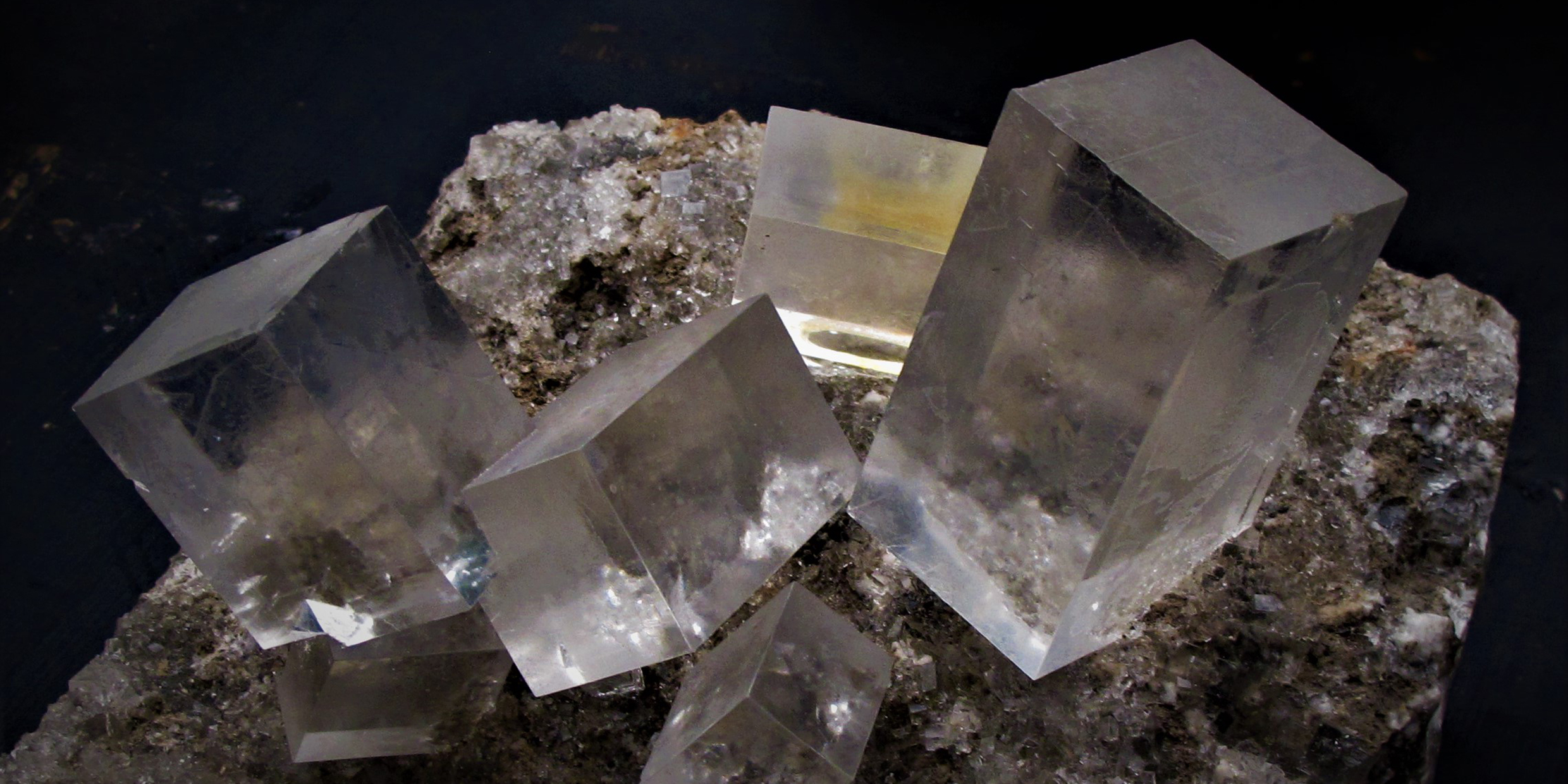Originally published 13 May 1991
The [1991] Gems exhibit at the Boston Museum of Science begins as gems begin — deep underground.
Well, no, that’s not true. The very first thing the visitor will encounter is a formidable security system — a barrier, a metal detector — not unlike what you might find at an airport. After all, there are some expensive gems and jewelry on display, gathered from near and far. These include everything from priceless treasures of Egyptian pharaohs and Russian czars to one of Liberace’s rhinestone-covered suits.
But leave descriptions of those beautiful decorative baubles to the arts pages. The true secret of the beauty of gems begins in science — in geology, chemistry, crystallography, and the physics of light. The museum exhibit lets us approach the treasures along a path of knowledge that begins deep inside the earth.
The first room we enter is an underground cavern, lit, seemingly, by a glow of phosphorescence. Giant crystals glitter in geometric perfection. On screens fixed into fissures in the cavern’s roof we watch crystals actually forming. A gem pocket, or underground cavity, rich in beryl, topaz and tourmaline, has been recreated in the cavern’s wall.
Suddenly, we are transported into the realm of trolls and gnomes, to the mines and tunnels of Middle-earth, J. R. R. Tolkien’s fantasy world, and to the ancient mythic theme of subterranean descent.
Treasures from the depths
Tolkien’s adventurers are frequent visitors to the deep places of the world, the goblin holes of the Misty Mountains, the underground halls of Thranduil the Elven-king, the dragon infested hollows of the Lonely Mountain, the caverns of Moria, the Glittering Caves, and the deadly subterranean rooms of Mordor, including the Chambers of Fire in Mount Doom. In these places are found sources of great enchantment — magic rings, jewel-encrusted swords, gorgeous stones with the power to enchant, enslave, and transform.
And what else are we to expect but magic when the earth is broken open to reveal objects of such unearthly beauty, objects that share symmetry and pure color with living things, yet resist corruption, death and decay.
For me, the high point of the Gems exhibit is the display of crystals in the context of their creation, still attached to the inconspicuous rocks out of which they were born, columns and prisms of shimmering radiance rising from a dark, formless matrix. There is indeed a kind of magic here, more powerful than that of any sword or ring.
The secret of gems first revealed itself to René Just Haüy, professor of mineralogy at the Natural History Museum in Paris, early in the 19th century. According to a story that has come down to us, Haüy was examining a calcite crystal that belonged to a friend, when to his great embarrassment he dropped it. The crystal shattered into many pieces. When Haüy picked up the pieces he noticed that every fragment, no matter how small, had the shape of the original crystal. He guessed that ultimately the crystal took its geometry from the shape of tiny, indivisible units of which it was made.
Haüy was right. The indivisible units are arrangements of atoms, which — depending on the kind of atoms — link themselves together in characteristic ways. Deep in the bowels of the earth, in cracks and fissures heated by the earth’s internal fire, in the presence of volatile water and gases, atoms of silicon, aluminum, calcium, beryllium, lithium, magnesium, iron — the stuff of more prosaic rocks — arrange themselves into rows and planes of perfect regularity, binding unit-by-unit into cubes, pyramids, and prisms.
The secret of matter itself
The secret of gems is the secret of matter itself, which allows itself the privilege of geometrical connection. The Science Museum exhibit lets the visitor explore these beautiful atomic structures, and discover how regularity at the atomic level explains the shape and shine of gems.
But the beauty of gems derives from more than geometrical order. Imperfections and impurities account for much of their beauty: the blue of sapphire, the green of emerald, the rainbow of tourmaline, the cat’s-eye of chrysoberyl, the star of star ruby, are all explained by variations from perfection. Beauty, as perceived by the human mind, derives from a delicate balance of order and chaos, and nowhere is this more obvious than in the appeal of gems.
Out of the fire and chaos of the Earth’s subterranean passages gems are born. Out of formlessness comes structure and symmetry. Out of darkness comes objects capable of transforming light. The glittering treasures in the museum show are icons of the verse and refrain of the material music that animates the world, seen here in its purest pre-animate form.
By the time we reach the last ornate rooms of the exhibit, and the cases of rings, crowns, swords, harnesses, cups, and bowls, all exquisitely crafted and encrusted with gems, we are ready to believe, with the denizens of Middle-earth, that our journey through the netherworld (and maybe a battle with a troll or two) was necessary to be worthy of such extravagant perfection.



